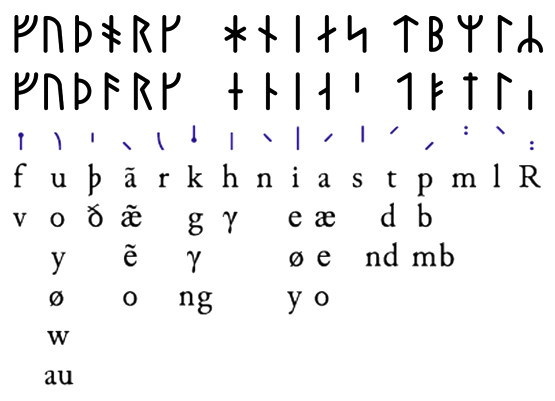Руны - Младший Футарк (Younger Futhark)
Самые ранние надписи Младшего Футарка были найдены в Дании, поэтому их иногда называют датскими рунами (это "нормальный" Младший Футарк, см. первую строку на рисунке выше).
Однако, очень скоро был разработан еще один вариант Младшего Футарка.
Younger Futhark
The Younger Futhark, also called Scandinavian runes, is a runic alphabet and a reduced form of the Elder Futhark, with only 16 characters, in use from about the 9th century, after a "transitional period" during the 7th and 8th centuries. The reduction, somewhat paradoxically, happened at the same time as phonetic changes that led to a greater number of different phonemes in the spoken language, when Proto-Norse evolved into Old Norse. Thus, the language included distinct sounds and minimal pairs that were written the same.
The Younger Futhark is divided into long-branch (Danish) and short-twig (Swedish and Norwegian) runes; in the 10th century, it was further expanded by the "Hälsinge Runes" or staveless runes.
The lifetime of the Younger Futhark corresponds roughly to the Viking Age. Their use declined after the Christianization of Scandinavia; most writing in Scandinavia from the 12th century was in the Latin alphabet, but the runic scripts survived in marginal use in the form of the medieval runes (in use ca. 1100–1500) and the Latinised Dalecarlian runes (ca. 1500–1910).
Руны старшего Футарка:
Нортумбрийские руны:



